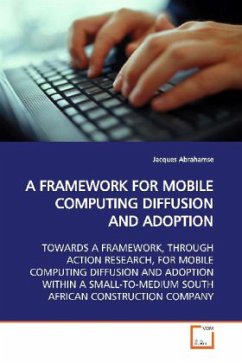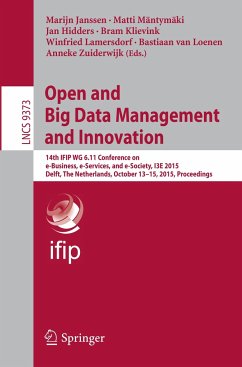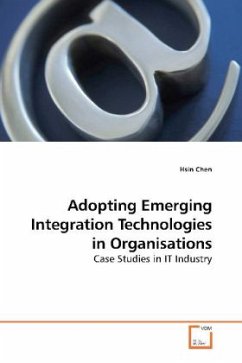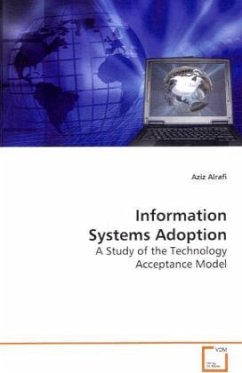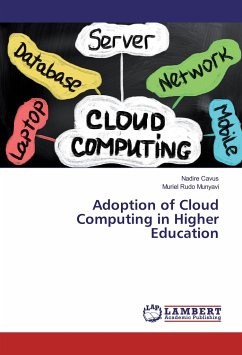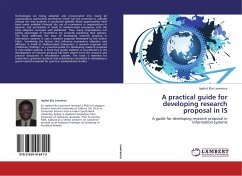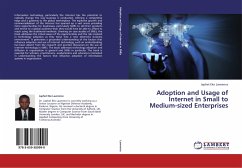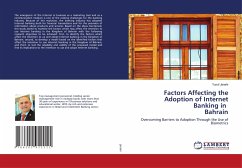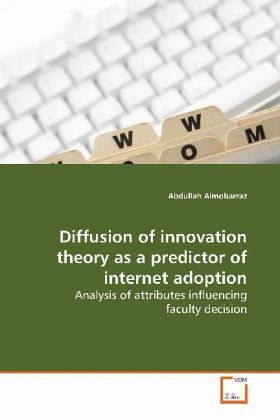
Diffusion of innovation theory as a predictor of internet adoption
Analysis of attributes influencing faculty decision
Versandkostenfrei!
Versandfertig in 6-10 Tagen
39,99 €
inkl. MwSt.

PAYBACK Punkte
20 °P sammeln!
Internet adoption can be considered the late 20thcentury s most important event. In academicenvironments today, Internet applications have beenwidely implemented in universities and colleges, withprofessors now integrating Internet technology intoclassroom activities. Therefore, this study applieddiffusion of innovations theory to identify thedifferences in demographic characteristics ofInternet adopters and non-adopters among facultymembers at Imam University in Saudi Arabia, toexamine whether faculty members'' perceptions of theInternet affected adoption, to determine if theuniversity admini...
Internet adoption can be considered the late 20th
century s most important event. In academic
environments today, Internet applications have been
widely implemented in universities and colleges, with
professors now integrating Internet technology into
classroom activities. Therefore, this study applied
diffusion of innovations theory to identify the
differences in demographic characteristics of
Internet adopters and non-adopters among faculty
members at Imam University in Saudi Arabia, to
examine whether faculty members'' perceptions of the
Internet affected adoption, to determine if the
university administration s decisions impacted faulty
members'' decisions to adopt the Internet, identified
factors motivating faculty members to adopt the
Internet, to identify obstacles influencing faculty
members'' decisions to use the Internet, and
determined whether innovation characteristics as
perceived by faculty members predicted Internet
adoption. Using Rogers diffusion of innovation
theory, the influence of eight attributes were
examined regarding Internet adoption among Imam
University faculty members.
century s most important event. In academic
environments today, Internet applications have been
widely implemented in universities and colleges, with
professors now integrating Internet technology into
classroom activities. Therefore, this study applied
diffusion of innovations theory to identify the
differences in demographic characteristics of
Internet adopters and non-adopters among faculty
members at Imam University in Saudi Arabia, to
examine whether faculty members'' perceptions of the
Internet affected adoption, to determine if the
university administration s decisions impacted faulty
members'' decisions to adopt the Internet, identified
factors motivating faculty members to adopt the
Internet, to identify obstacles influencing faculty
members'' decisions to use the Internet, and
determined whether innovation characteristics as
perceived by faculty members predicted Internet
adoption. Using Rogers diffusion of innovation
theory, the influence of eight attributes were
examined regarding Internet adoption among Imam
University faculty members.




